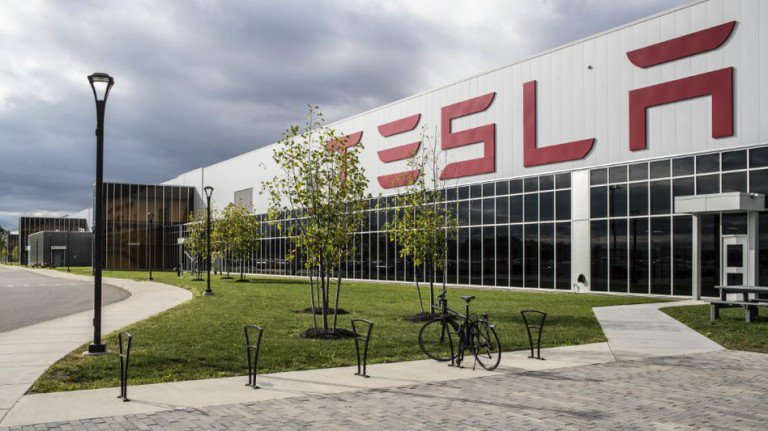By Beth Gibson – ABC News – 14 June 2019
Australia’s largest integrated battery and solar farm was officially opened in Victoria’s north on Friday.
The 50-megawatt battery system just outside of Kerang stores 100 per cent renewable energy and feeds directly into the state’s electricity grid.
It is Tesla’s second biggest battery in Australia, after its 100-megawatt lithium ion battery in South Australia, with the capacity to power 16,000 homes.
Victoria’s Energy Minister, Lily D’Ambrosio, said it was a huge step towards the government’s renewable energy target of 50 per cent by 2030.
“It’s producing clean, renewable energy from a really important natural resource that exists in north-western Victoria, and that is the sun,” Ms D’Ambrosio said.
Last year the Victorian Government and the Federal Government each gave $25 million to fund two 50-megawatt batteries in Victoria — one in Kerang and in Ballarat.
The integrated system has been running since the end of last year and Minister D’Ambrosio said it was crucial during Victoria’s heatwave when a lot of the older energy sources, like the Loy Yang power station in the Latrobe Valley, struggled to function.
“Everyone will remember that in January we had record extreme temperatures, especially in north-western Victoria where there were temperatures of 49 degrees,” she said.
“This battery was still be producing and providing electricity during those really extreme heat temperatures.”
Chief executive of Edify Energy, John Cole, described the battery as a sophisticated piece of equipment that was unlike anything else in Victoria’s energy network.
“The battery can be used to provide strengthening to the network when required, it can store power, and it responds to network issues in milliseconds rather than minutes,” he said.
Boost to small regional economy
Manager for economic development at the Gannawarra Shire Council, Roger Griffith, said the project was great for the small town of about 4,000 people.
“If you look at the positive profile of renewable energy around Kerang, it’s probably a much more positive profile than the town had 25 years ago,” he said.
During the construction phase of the project about 180 people were employed for 10 to 12 months.
“Just the food and provision that the workers consumed while they were working on site, it was in the tens of millions of dollars,” Mr Cole said.
“I think I’ve probably seen it 100 times and every time I see it it still amazes me as to the scale and complexity of the project,” Mr Griffith said.
In addition, the project has attracted a number of other businesses to the region.
“We have planning permits in pace for eight large-scale solar farms,” Mr Griffith said.
“This is the first, the second one is under construction, and the other six are at various stages of development.
“Once all of those projects hit the ground that’s when we will start to see the real benefit.”
While most of the community were onboard, Mr Griffith said that there was some local opposition to the farm.
“It’s part of change,” he said.
“The world’s changing, the world will continue to change, we can either sit back and watch it change or try and jump in and try and benefit our local economy and community.”

Energy Stuff provides a full range of new smart solar systems which can include battery ready inverters or systems with integrated battery storage. All our systems come with smart energy management to provide real time monitoring and energy efficiencies. Finance options are available, simply ask our knowledgeable staff for details.
For further information call 1300 656 205 or go to our website at




















